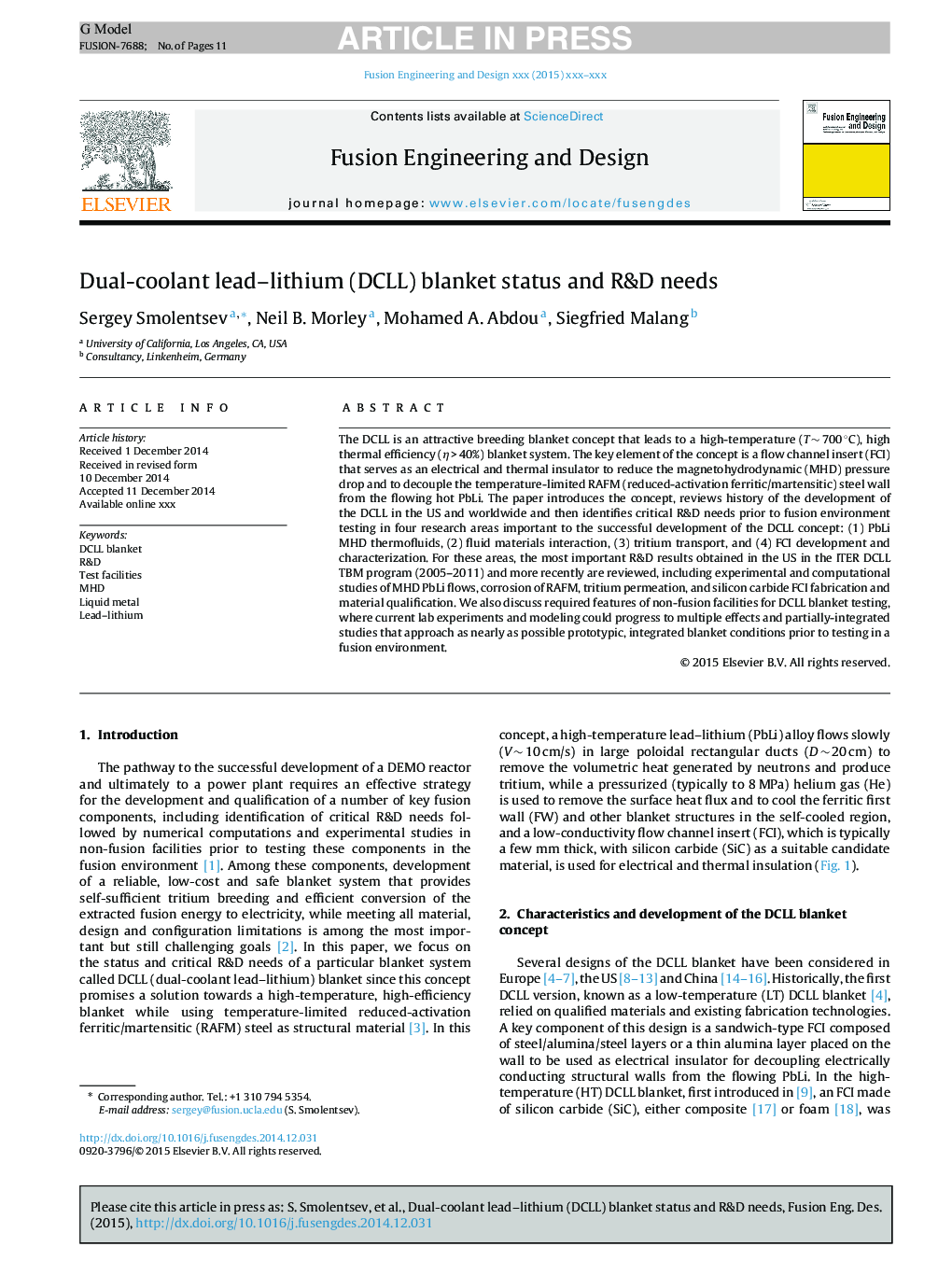| Article ID | Journal | Published Year | Pages | File Type |
|---|---|---|---|---|
| 6745510 | Fusion Engineering and Design | 2015 | 11 Pages |
Abstract
The DCLL is an attractive breeding blanket concept that leads to a high-temperature (T â¼Â 700 °C), high thermal efficiency (η > 40%) blanket system. The key element of the concept is a flow channel insert (FCI) that serves as an electrical and thermal insulator to reduce the magnetohydrodynamic (MHD) pressure drop and to decouple the temperature-limited RAFM (reduced-activation ferritic/martensitic) steel wall from the flowing hot PbLi. The paper introduces the concept, reviews history of the development of the DCLL in the US and worldwide and then identifies critical R&D needs prior to fusion environment testing in four research areas important to the successful development of the DCLL concept: (1) PbLi MHD thermofluids, (2) fluid materials interaction, (3) tritium transport, and (4) FCI development and characterization. For these areas, the most important R&D results obtained in the US in the ITER DCLL TBM program (2005-2011) and more recently are reviewed, including experimental and computational studies of MHD PbLi flows, corrosion of RAFM, tritium permeation, and silicon carbide FCI fabrication and material qualification. We also discuss required features of non-fusion facilities for DCLL blanket testing, where current lab experiments and modeling could progress to multiple effects and partially-integrated studies that approach as nearly as possible prototypic, integrated blanket conditions prior to testing in a fusion environment.
Related Topics
Physical Sciences and Engineering
Energy
Energy Engineering and Power Technology
Authors
Sergey Smolentsev, Neil B. Morley, Mohamed A. Abdou, Siegfried Malang,
